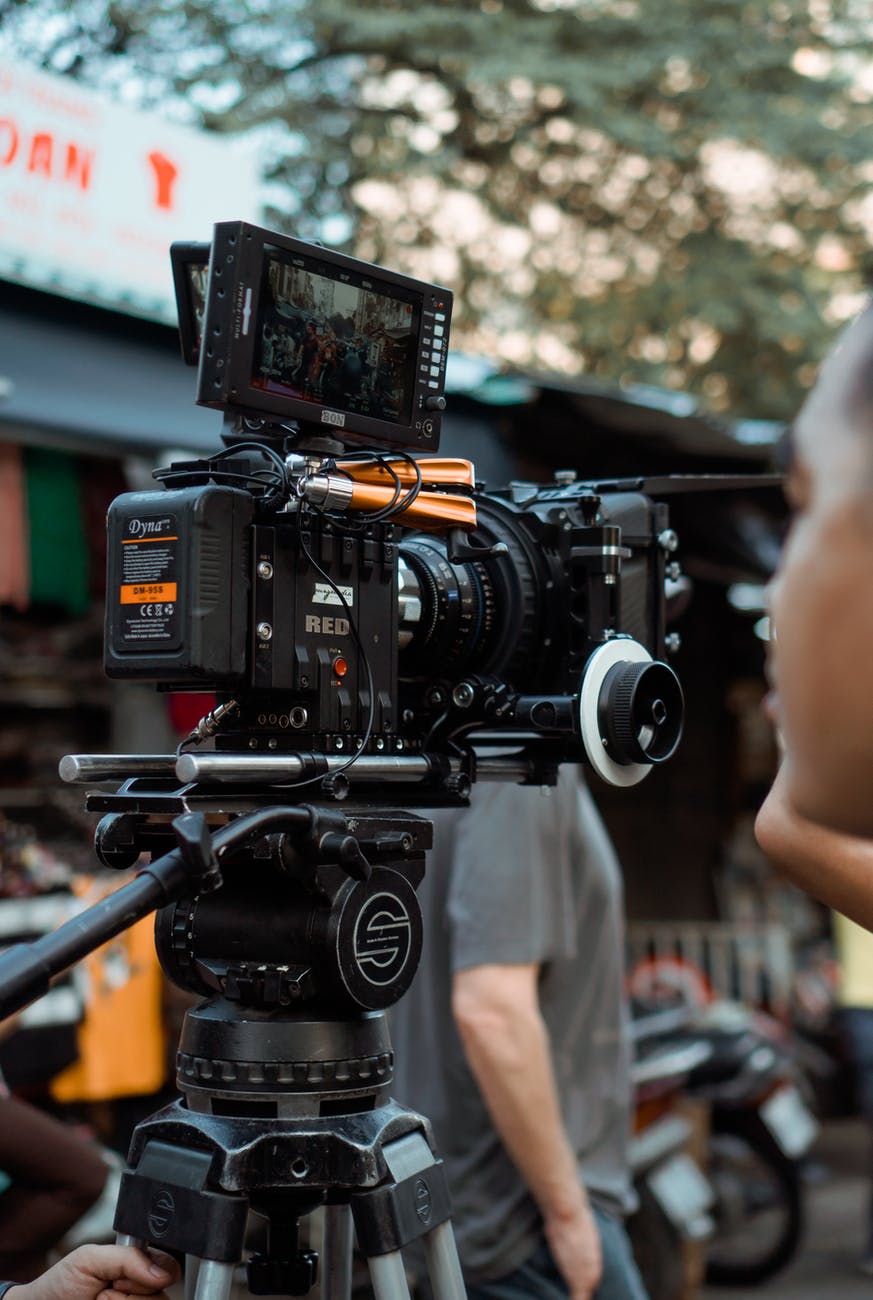Software Bollywood digital culture -After Effects and algorithms culture in Photography and filmmaking. Transformation of the visual language. Is social media creating a digitally dependent culture? Digital visual culture theory and practice of using software manipulations in cinema.
Lev Manovich and Jose Van Dijck provide a framework for new image technology techniques. This paper will explore how new media impacts Indian cinema by giving examples. The purpose of evaluating the arguments laid forth is to shed new light on some of their discussions and by no means to relegate their contributions. There are four dimensions to produce significant ideas based on their readings. These are algorithms culture, software manipulations, memory, and the human agent (software expert). The latter half of the essay will examine the cognitive and psychological aspects limited to the plausibility of software used by Indian audiences.

It includes an analysis of how the software “After Effects” is used in Bollywood cinema to enhance the visual perceptions of the audiences.
Cinematography Digital Graphics
The production environment in Bollywood cinema is digital. Where freelance graphic designers, illustrators, and small post-production and animation studios are a reality. The inexpensive graphic workstations, personal computers, and illustration software are all affordable in Bollywood. Image editing, animation, compositing, cinematography, still photography animations, and 3D computer animations have combined various ways and transformed India’s visual culture. The use of software–produced special effects in Bollywood feature films has affected narrative filmmaking. This happened because of inexpensive digital video and editing tools (Manovich, 2013: 250-252). However, although these transformations’ results are visible, they have not been critically analyzed. Neither the change in the visual languages used by other forms of moving images outside of narrative films has also not been critically studied by western critics. Therefore, it has become interesting to open up some challenging issues. The revolution from still images to moving images and the use of software in Bollywood is remarkable. A conspicuous transformation and the development of a new hybrid language are noticeable. However, this paper will not examine the ubiquity of how things looked before, as it would be exhaustive for this essay.

Nevertheless, an example is included to examine how the After Effects software has affected the aesthetics of hybridity in India (Manovich, 2013: 254). Theoretically, even though there is talk of globalization. Yet both authors have left out Bollywood from their analysis. In software studies, Bollywood needs to be considered, or the use of the software is underrated (Manovich, 2013: 254). The purpose of this essay is to give a creditable position to Bollywood cinema in the “invisible revolution and After Effects” from the point of Indian contemporary culture and to establish how the new ‘Meta language’ has created hybridity in the modern era of Indian cinema (Manovich, 2013: 244)
The New Interface – Visual Effects
We see in India (today) motion graphics taking off, which have been mass-produced in large numbers. Films are dominated by graphical elements rather than live action because the new interface of running software on PCs, such as visual effects, was popularized by films such as Dhoom3 and Krish3. Although Doom 3 was a sequence of Dhoom1 and Dhoom 2 ((Y.R.F.), 2014).

This film has extraordinary “invisible effects.” This film’s most significant visual effect was the double of actor Amir Khan who had to look as natural as possible. The fluidity of the camera position was fixated in the past; it used to be a static shot. However, with motion control, the camera is controlled through the computer, and the camera is ‘manipulated’ to move with precision. Previously, this would not be possible. Computer software is an integral component of filmmaking, and a different logic was encountered in this film. Interactive computer graphics and animations transformed the use of Computer Generated Imaginary (CGI) to the next level. Digital replacements of Amir Khan’s face curves from the data were applied to the digital face. The use of motion graphics, compositing and visual effects in making Dhoom 3 explains how human agents in Bollywood media were authorizing software (Manovich, 2013: 288). This film created a new dynamic and visual aesthetic that did not exist previously.
Consequently, it was not a mechanical shot but software remix techniques using animation curves and digital actors. Working methods techniques with media were utilized to create the visual effects and embed them in the film. The standard features of the new aesthetics highlight “deep remix ability and manipulability.”
Computing Labs
Furthermore, Tata Elexi’s visual computing laboratory was nominated for the best special effects in color screen awards for Dhoom 3 (India, 2014). As demonstrated, a vast array of visual effect solutions for this film. In a nutshell, Tata Elexi blends technology, creativity, and software engineering. The film was made in a software environment; hence the spatial dimensions in making this film became as important as the temporal dimension (Manovich, 2013: 296). There was increasing integration of different skills and people from other spheres and areas. Moreover, software applications have enhanced audience perceptions.
However, the obliteration of Indian cinema from Manovich’s and Dijck’s work is that it became a more reflective analysis for this essay.
Bollywood is limited to Hindi cinema and includes Tamil, Punjabi, Marathi, and Gujrathy (other dialects spoken in India), making it a more complex and scientific study. Bollywood also boasts an International audience. Yet, both authors have to mention its essential contributions to digital networks and software studies, considering that Madame Tussauds has wax figures of famous Bollywood actors.
Fusion With Technology
Many examples are available on YouTube for Hindi and Tamil cinema. The composite fusion of using software in music, film, and documentaries in Bollywood has changed cinematic experiences. This shows the speed with which technology has captivated Indian audiences. Consequently, the boundaries between different professional fields in Bollywood have become less critical because of standard software applications such as Photoshop, Illustrator, Final Cut, After Effects, Maya, and 3ds Max (Manovich, 2013: 246). For example, advertising campaigns have also reused the same designs.
The repetitive mention of the terminology by Manovich, “same software,” “repeating patterns” (Manovich, 2013: 303), and “reappearance of exactly the same designs” (Manovich, 2013: 306) can be applied to Bollywood cinema. Although, the repetitive use of software has led to diversity as software applications are switched in production.
It has ushered interaction and the emergence of new information in Bollywood by re narrating in new ways in different languages through the digital culture prevalent in India. India’s use of software applications is growing, and the Allogyrthmic culture of visualizing data is apparent on YouTube. Thus, research needs to be done on how Bollywood’s new forms of storytelling are sustained. By 1993, the software industry began competing, for example, in After Effects, Flame, Inferno, and paint box. By 2003, more companies like Apple’s Motion, Autodesk’s Combustion, and Adobe Flash were available for the same price.
Hence, the market was flooded with graphic software, which was a good sign for Bollywood and was also readily available in India (Manovich, 2013: 246-248).
Consequently, in Bollywood, this attracted fresh new talents who entered the domain and were expert designers keen to keep up with the pace of demanding audiences using Web 2 technologies.
DIGITIZATION OF CINEMA
The new software has combined various forms of “hybridity” and “Deep remix ability.” Likewise, the audiences individually use social media. Yet, ‘digitization’ does not have the same effect. ‘Digitization,’ on the other hand, explores how technical changes affect individual identity formation. In India too, audiences are also using software by increasingly manipulating conventional images to suit the individual’s needs (Dijck, 2008: 57). Photography has become a norm of self-communication and as a means of interaction and peer bonding (Dijck, 2008: 62). Both digitization and “softwarization” use the Meta language platform. In the former, the individual can manipulate the image with software such as Photoshop by reposing and reframing. However, digitization does not cause artificiality (Dijck, 2008: 66). There remains a debate about whether it is narratives or photographs, or a combination of both, that triggers most false memories, for instance, the Bollywood song Galliyan. (Dijck, 2008: 64). This video explains how lighting and framing techniques are used in Bollywood with an emotional narrative (Jain, 2014). Imagination is something that is created outside the live-action shots by manipulation. In this case, CGI uses multiple tools and technologies for flashing images to get the desired effects. Dijck’s analysis tends to give examples of Hollywood; however, people’s memories and imagination are affected by Bollywood cinema too. A comment by Sandeep Ranwal on YouTube reveals that “The song makes me feel that I am in Kashmir,” whereas the song was recorded in Mumbai, which boasts of a hot climate, while Kashmir has cold weather.
This is confirmed as research shows that people can be seduced into creating false memories because the human mind is constantly producing autobiographical pieces of evidence through pictures (Dijck, 2008: 63)
Digital image versus Moving image
Staying with this analysis that software codes modify digital and moving images. It may have an incredible influence on memory and imagination (Dijck, 2008: 64). Before examining Manovich, it will be necessary to understand Jose Van Dijck. Her emphasis is on personal identity and memory as a form of communication. She explains that the image or images get multi-layered or overlayered as the individual loses control as the image’s ability is touched, retouched, and reconstructed by software. (Dijck, 2008: 65).
In software studies, this raises questions about the aesthetics of digital images relating to Indian audiences and how they interact with software. How this ends up in the collective memory of Indian people is not understood (Dijck, 2008: 69). If the software is the new interface, then we need to examine how its implications shape the imagination.
The cognitive and cultural theories will differ for Indian and Western audiences, and this discussion is not included in this essay. In addition, there are significant differences in Hollywood and Bollywood’s cognitive and technical mechanisms. It is similar to Hollywood cinema and Western audiences in that no matter what application is used for digital or moving images. The tools are similar to – the computer in the universal Meta Medium synthesizing on one interface of the- software.
Be it still, photographs, sound, music, or films, all these forms can be transported, replicating and creating new hybrids in Bollywood. By using techniques, we can use effects in Photography to move images.
Photographic effects on text and moving images by the software algorithm can be processed in similar ways. This is illustrated by an example. As Manovich explains, “After Effects” on motion images bring all forms together and heighten audiences’ perception. Hybrid images can be assembled from many layers. For example, the Bollywood song in Ek Villian (One Rouge) (Series, 2014) on YouTube has two videos of precisely the same length of time of 5.41 seconds. The same song sequence and lyrics raise the question of why audiences prefer one to another. The repetitive circulation of one of the links by individuals and the repetition of hearing the song on YouTube explain two phenomena. Firstly, people are participating.
Secondly, on analyzing it further, one video had four million hits, and the other video had eight million hits on YouTube and went viral. This explains that the video with the software “After Effects” link on YouTube was circulated by individuals on Facebook, google circles, and Twitter and spread by hashtags rapidly compared to the video without “After Effects.”
This shows how participation is taking place at a high level with software manipulations. The visibility and ingenuity of human interaction with the machine conception show India’s dependency on allogyrthmic cultures through YouTube examples. It also highlights the occurrence that people appreciate aesthetics as improvised visual designs. In addition, the condition that designers use software and can apply all techniques gives them additional dimensions of space and time. None of these effects would have been possible.
However, in Ek Villian, an amalgamation of artists, musicians, graphic designers, and singers, creativity and talent gel with ideas that software saves time. The designers can now substitute one element of the music composer’s composition anytime by inserting another or deleting or adding new ones (Manovich, 2013: 281).
The computer supports artistic Meta language for Tamil and Hindi films, songs, editing, sound, and cinematography. This leads us to believe that although there is only one Meta medium, many Meta languages exist. Hence, Hindi cinema has a global audience (Manovich, 2013: 276).
The experts and amateurs using the software for commercial gain or identity building have a common node of convergence of globalization and cultural behaviors.
The veracity of dialectical anthology from Bollywood indicates that it cannot be excluded from discursive debates of software studies. (Series, 2014)Interlocution of Bollywood cinema in software studies is crucial. Bollywood and Hollywood’s designers are already conversing, and academics must do the same. This essay has attempted to dissertate some issues at a global level from a socio-cultural viewpoint.
References
(Y.R.F.), Y.R.F. (2014) YouTube, May 7, [Online], Available: https://www.youtube.com/watch?v=EFiSRYhu924&sns=fb [February 18, 2015].
Dijck, J.V. (2008)’ Digital Photography: Communication, Identity, Memory,’ Sage, vol. 7, no. 1, pp. 57-76.
India, O. (2014) Filmfare 2014: Best VFX Goes To Tata Elxsi For Dhoom 3, January 24, [Online], Available: http://www.tataelxsi.com/services/animation-vfx/visual-effects.html [February 18, 2015].
Jain, P. (2014) Pandolin, July, [Online], Available: http://pandolin.com/approach-lighting-framing-scene-tandem-emotional-narrative-vishnu-rao/ [Thursday, February 2015].
Manovich, L. (2013) Software Takes Command, London: Bloomsbury Academic.
Series, T. (2014) YouTube, May 9, [Online], Available: https://www.youtube.com/watch?v=9FXm9R2VTBg [Saturday, February 2015].
Series, T. (2014) YouTube, May 13, [Online], Available: https://www.youtube.com/watch?v=PL8X5gq9ZlQ [Saturday, February 2015].
July 10, 2016
CHAPTER 2
What is Code? A source code is a form of textual programming code edited by computer programmers. As a novice, I did not understand coding, which was difficult, and the interpretation of Code as a textual artifact. I met two coders and discovered that it is a developmental process written on the computer and outlines in detail the function and approach that the computer (machine) has to follow to achieve a particular computational goal(human challenge). It is then compiled logically to produce an executional code that the computer can understand and run. The difficulty lies in articulating a program distinct from the textual format. There are good and bad coders, and Urban Designers for Smart Cities strive for elegance. This is nicely demonstrated by The Alliance For Code Excellence. However, there are also Source Lines of Code SLOC. Programmers can purchase ‘Bad code offsets.’ Harmful and destructive codes arise for several reasons: lack of skill or poorly documented. Every purchase will offset the desired quantity of SLOC and pave the way toward future codes of excellence.
I was unaware that Code and software were synonymous with computer programming. Still, I want to make an analytical difference between Code and software after meeting two engineers at A.E.C. Hackathon London. Data Scientists or Computer scientists write the text in a language. Still, the translation occurs when the text in Code or program language gets compiled into the machine instruction, which is not encoding because the process is not reversible. Therefore, software manufacturers can keep their product secrets in Code. Viewpoint.
